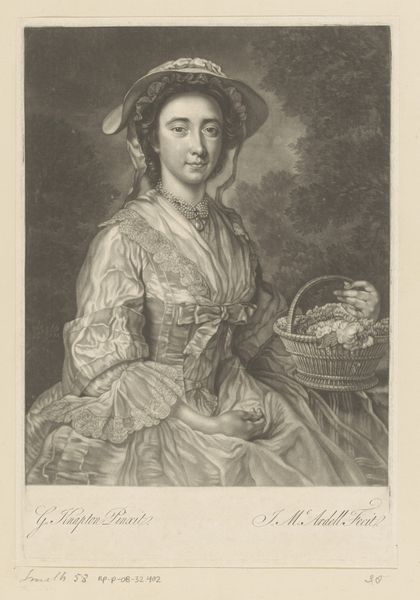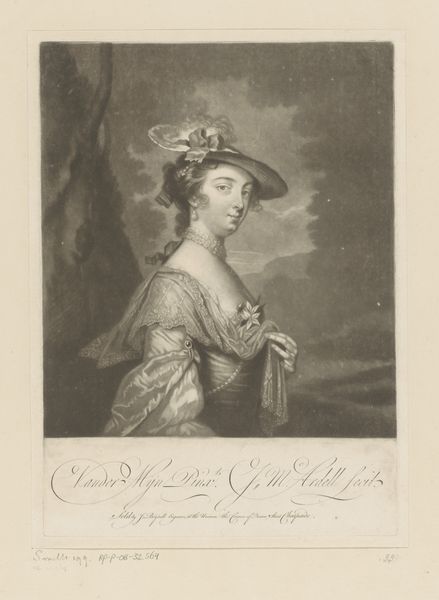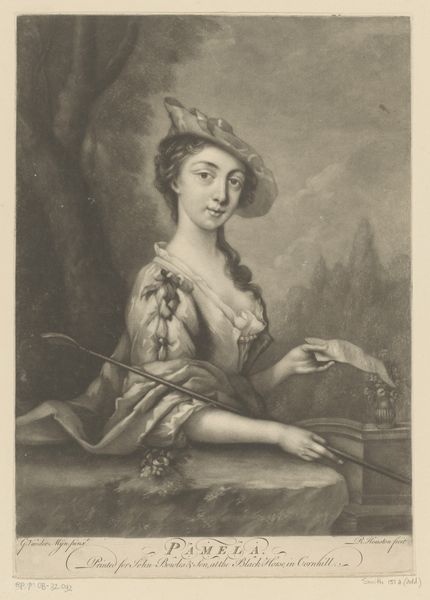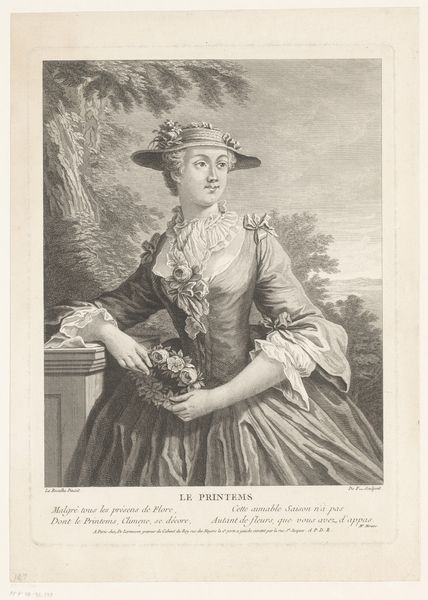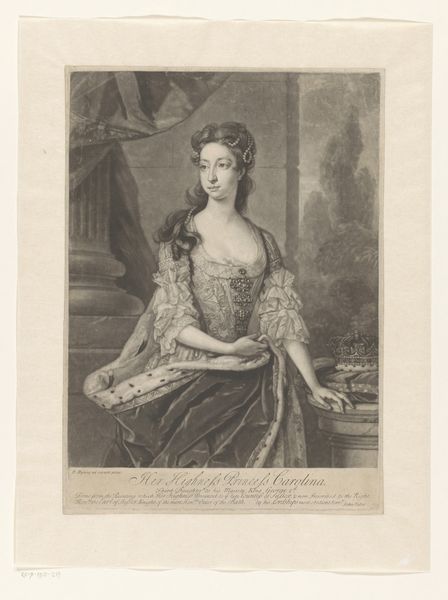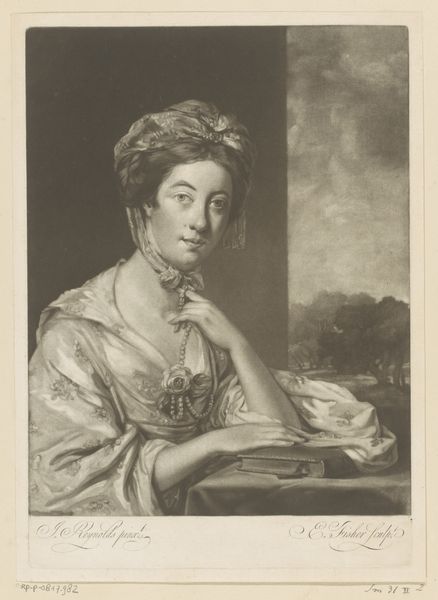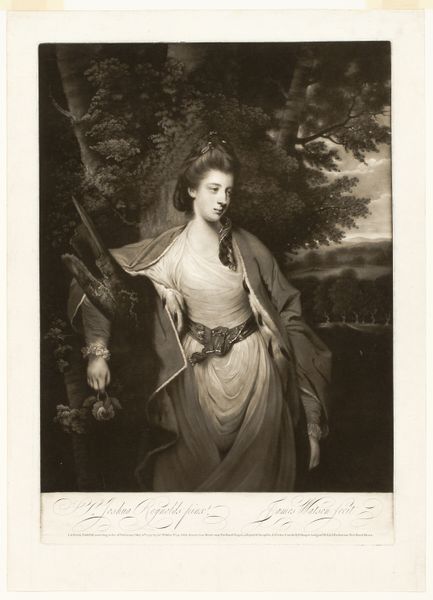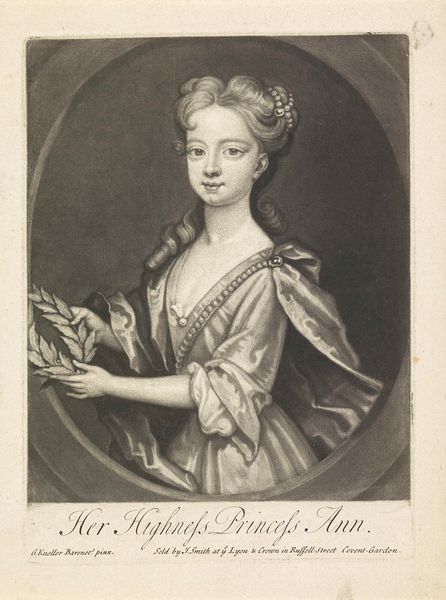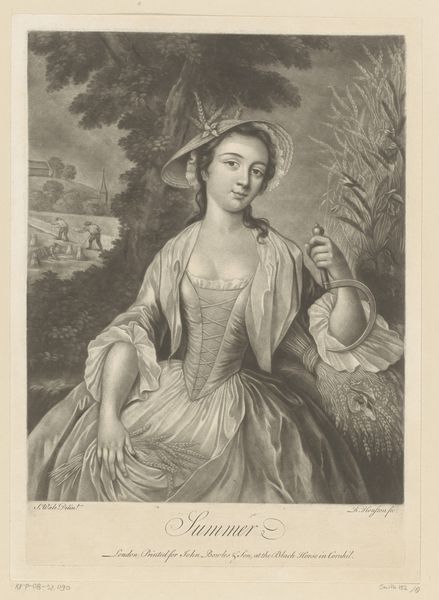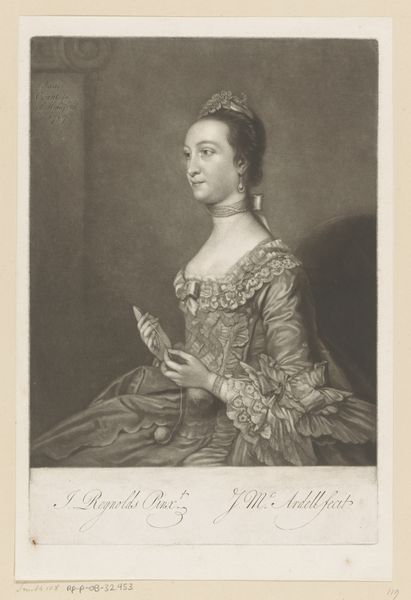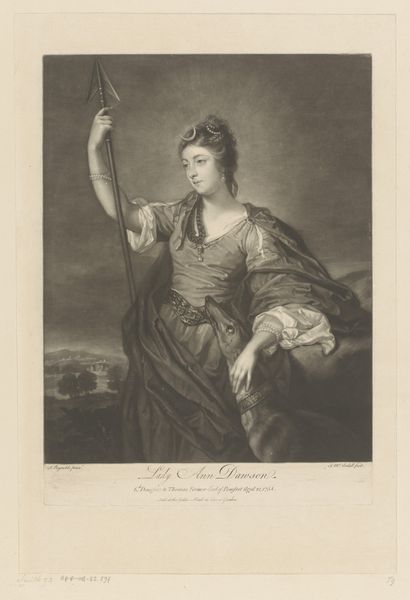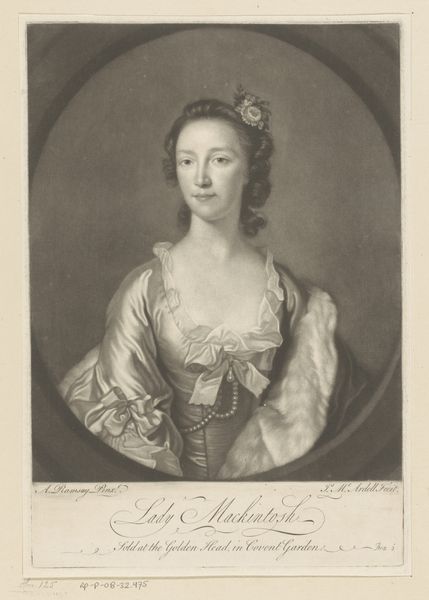
print, engraving
#
portrait
#
baroque
# print
#
figuration
#
genre-painting
#
engraving
Dimensions: height 327 mm, width 223 mm
Copyright: Rijks Museum: Open Domain
Curator: Standing before us is a print titled "Portret van Lucy Ebberton," also known as "The Country Maid." It's an engraving created sometime between 1745 and 1765 by James McArdell, and it belongs to the Rijksmuseum's collection. Editor: It's immediately striking. The monochrome palette evokes a certain demureness, yet the composition itself, the young woman’s pose and the cascade of fabrics—it feels rather intimate and intriguing. Curator: Intriguing indeed. "The Country Maid," though seemingly a simple portrait, can be seen as a commentary on 18th-century class and gender expectations. The ‘maid’ is depicted with an elegance that complicates the conventional image of a working-class woman. It challenges the societal roles assigned to women during that era. The inscription further suggests this through an aspirational idea of "humble Hopes confined." Editor: Absolutely. And let's consider the symbolism present. She holds flowers, not tools. She's idealized through pastoral themes that harken back to an idealized past, rather than her lived reality. The text at the bottom uses poetry to speak to happiness not swaying her mind and "no Passion," which is likely meant as a virtue. However, there is also the implicit meaning of not being a true portrait, so, what exactly are we looking at? The "country maid" and "portrait" clash! Curator: That dissonance is very much the point. This isn't just a portrait; it's a constructed identity, one that speaks to the power dynamics embedded within visual representation. It’s about exploring what it meant to occupy a certain socio-economic bracket as a woman. This challenges our notions of authenticity, even within a genre supposedly devoted to it. Editor: Examining the iconography does seem to challenge the initial impression. Seeing those conflicting symbolic cues invites an inspection that transcends just mere physical likeness. What the print delivers instead is an intersection between class aspirations and personal identity and, more crucially, the performance of it. Curator: It pushes the boundaries of portraiture beyond mere representation. McArdell’s engraving encourages critical dialogue on history, gender, and representation, making it relevant even today. Editor: It’s been quite a journey! We began with a seemingly conventional portrait, only to unearth layers of identity, social commentary, and visual metaphor. Thank you.
Comments
No comments
Be the first to comment and join the conversation on the ultimate creative platform.
